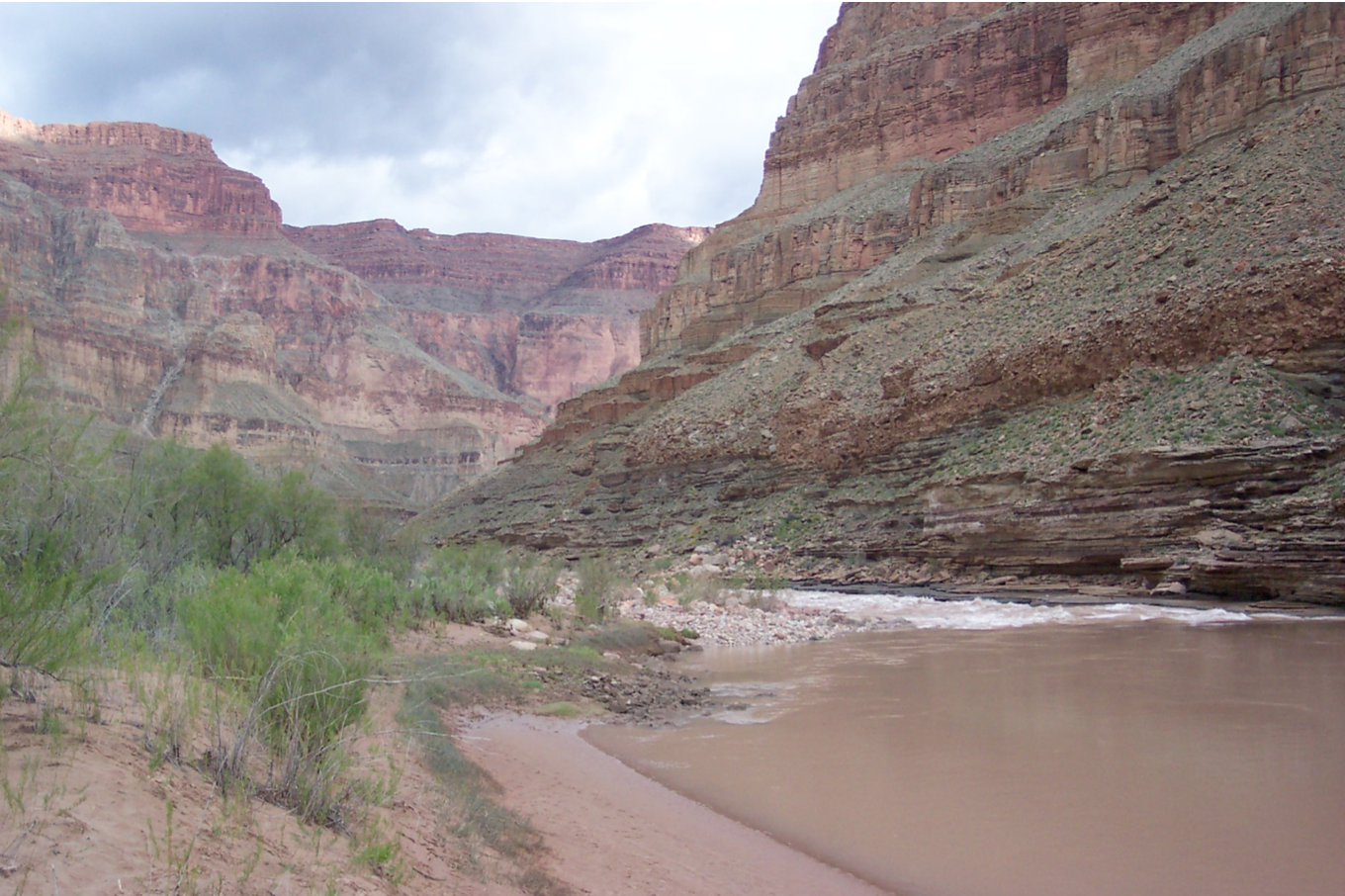To begin, the constriction ratio of a river is an idealized number in which the river is treated as a rectangular channel and the width of the channel’s water surface adjacent to a constricting obstacle is divided by the width of the river where it is unconstricted above and below the obstacle. Susan Kieffer (1985) examined the stability of debris fans in the Colorado River partly in terms of each debris fan’s constriction ratio of the mainstem. She noted that the river was unable to produce supercritical flows when the constriction ratio approached one half, and so lost the ability to significantly rework the debris thereafter. While rafting down the Grand Canyon I was interested in checking for myself if the constriction ratio I observed adjacent to debris fans really was about one half. If there was a great deal of variety, it would imply that either stability was not dependent on the constriction ratio, or the fans I chose to examine had experienced a variety of aggradations since their last significant reworking incident, and so were in a state of unstable equilibrium until sufficient reworking could take place.

Over the course of our trip I was able to measure constriction ratios twice at Forrester Rapid and Fishtail Canyon Rapid. Using a laser I was able to accurately measure the horizontal distance to the opposite side of the river. By choosing points roughly at my eye level, I minimized additional variation in length and was able to obtain relatively consistent measurements.

As the data shows, both of the debris fans which I measured constricted the river to roughly half the width of the mainstem immediately upstream. This supports Kieffer’s assertion that stable fans have reached roughly this value since the fans which I measured both lacked recent aggradation from debris flows and have not changed in recent years.
Sources Cited
Kieffer, S.W. “The Hydraulic Jump in Crystal Rapid: Implications for River-Running and Geomorphic Evolution in the Grand Canyon.” Journal of Geology, Vol. 93, 1985, 385-406.
